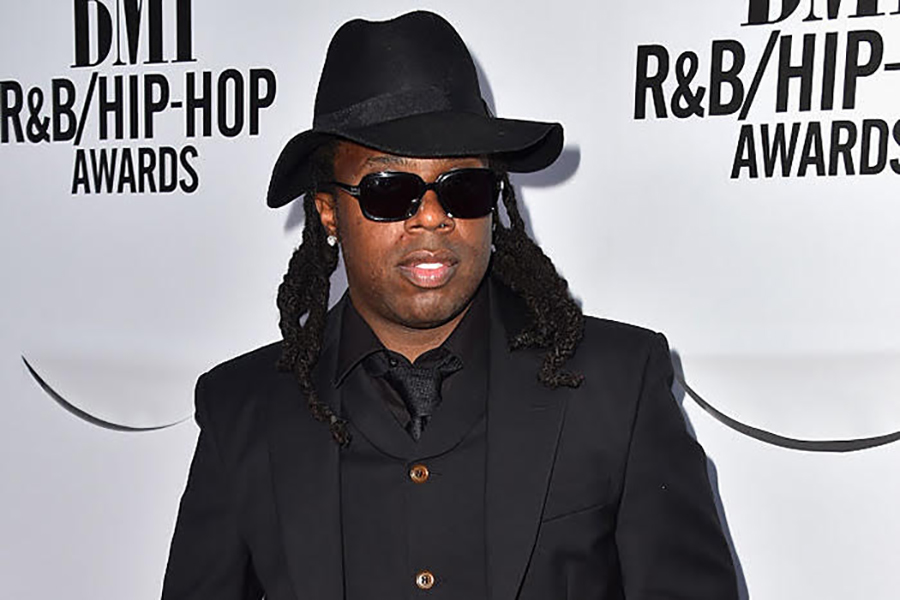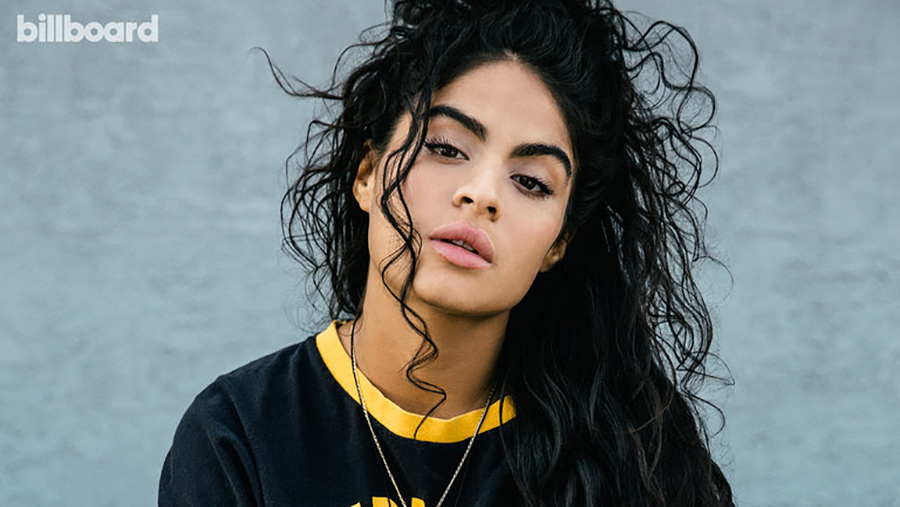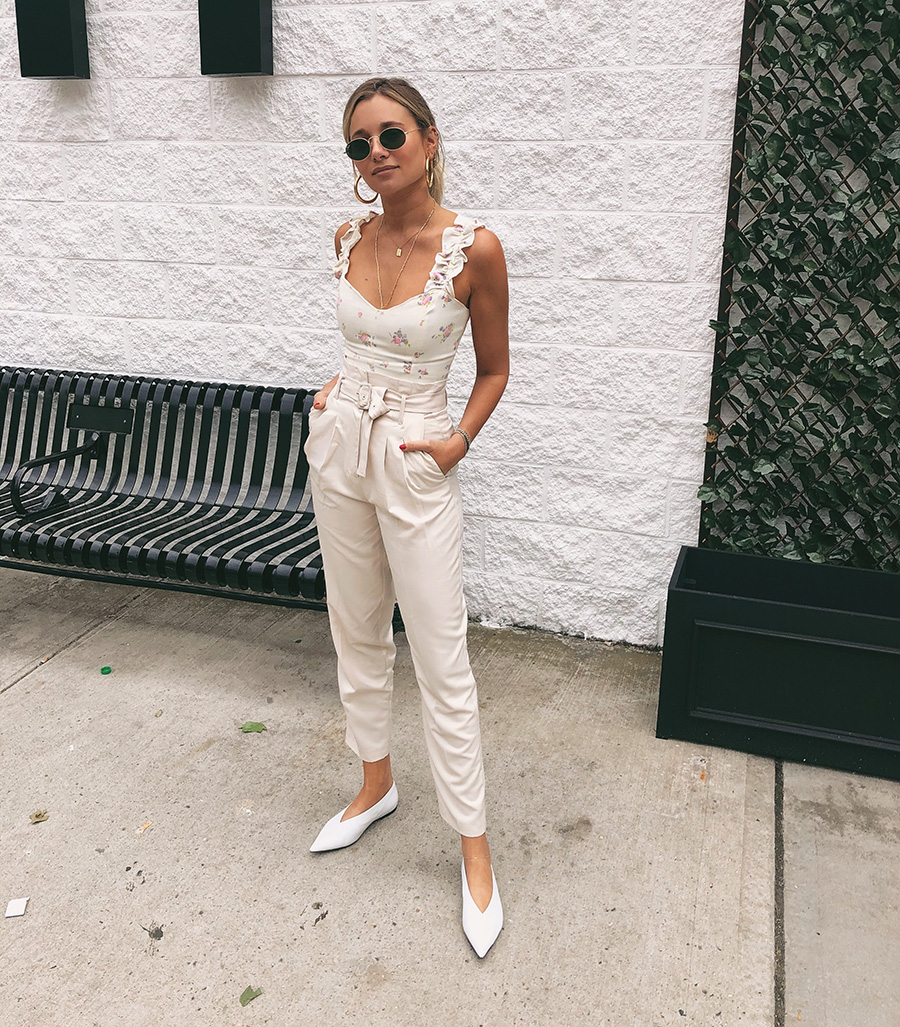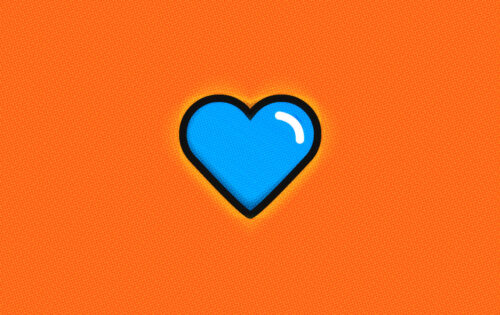
 Gigi Hadid on the cover of the first issue of Vogue Arabia
Gigi Hadid on the cover of the first issue of Vogue Arabia
Being an Influencer: Complications
In a world increasingly molded, shaped, and dissected through social media, we have seen a rise in the importance of the “Influencer” in building and developing our cultural norms. An entire new sector of celebrity has been created in which individuals like Danielle Bernstein of WeWoreWhat or Vanessa Hong of the Haute Pursuit have found fame by building immense numbers of followers on Instagram and their corresponding fashion / lifestyle blogs. On the other end, entire families like the Kardashians / Jenners have seen a rise to fame by doing nothing more than growing up entirely under the public eye and proceeding to be unabashedly themselves despite bouts of controversy.
In a New York Times article “The Rise and (Maybe) Fall of Influencers,” Vanessa Friedman tackles the discussion of influencer culture and the interaction between the personal and business sides of being a cultural icon. The article sets off by discussing photographer Mario Testino’s choice to feature Kendall Jenner on the 10th anniversary cover of Vogue India. Naturally, Jenner faced backlash as people were appalled that Vogue was unable to find a singular Indian model to be on the cover of such a paramount issue. However, Friedman considers whether Jenner is truly at fault or if Vogue or even only Mario Testino are to blame for being insensitive to a culture. The article proceeds to discuss a plethora of other ad campaigns in which influencers allowed themselves to be made the face of questionable branding. Jenner again encountered retaliation after being featured in a Pepsi commercial in which she attempts to pacify tension during a protest by offering a can of soda to a police officer. The officer accepts the soda and is immediately appeased by Jenner’s offering. The ad was called out for undermining the Black Lives Matter protests as it utilized a white model sporting blonde hair to help bridge the divide between police and protestors. Further, the simplicity of the action Jenner took to sooth the officer neglects the true complexity of police violence especially in the context of racial discrimination. In another ad, Gigi Hadid faced backlash as she was featured partially veiled on the cover of the debut issue of Vogue Arabia.
In the Vanity Fair article “Fyre Festival: Anatomy of a Millennial Marketing Fiasco Waiting to Happen” Bryan Burrough discusses the disaster that ensued after influencers were hired to promote what would become a notoriously extensive Caribbean nightmare for privileged festival-goers. Kendall Jenner, Bella Hadid, Hailey Baldwin, Emily Ratajowski and more were criticized extensively for encouraging followers to attend the event that offered nearly none of the amenities that it had promised and left thousands stranded for days on a nearly desert island.
In Vanity Fair article “Fyre Festival: Anatomy of a Millennial Marketing Fiasco Waiting to Happen” Bryan Burrough discusses the disaster that ensued after influencers were hired to promote what would become a notoriously extensive Caribbean nightmare for privileged festival-goers. Kendall Jenner, Bella Hadid, Hailey Baldwin, Emily Ratajowski and more were criticized extensively for encouraging followers to attend the event that offered nearly none of the amenities that it had promised and left thousands stranded for days on a nearly desert island.
A big problem with influencer culture lies within their decisions regarding which brands they agree to work with and represent. Generally, people agree that an influencer has complete control over the brands, ads, and ideals that they get to promote. Many believe there is some connection between the concepts undermining the ads an influencer participates in and their own personal values. But, our society is quick to forget that there is a complex interaction between being an influencer and conducting business. On the business side, being an influencer is a job and thus their income relies upon accepting ad campaigns and collaborations with brands. That being said, for some (or many) influencers, their lives before fame were not gloriously made up of red carpets, free luxury trips, and extensive gifts. Instead, many are entirely self made individuals who finally caught a break through social media and belatedly began making money. When thought about in this way, it becomes difficult to decipher whether the influencer is privileged enough to be selective about who they work with. In addition, we then have to think about the fact that the companies are the ones who come up with the contentious ads in the first place and thus the blame must inevitably start with them.
Politics and the Influencer
 https://www.thedailybeast.com/the-metoo-movement-shows-its-more-than-just-a-hashtag
https://www.thedailybeast.com/the-metoo-movement-shows-its-more-than-just-a-hashtag
But when does influencer branding become effective and beneficial to our world? And in what ways can we use influencers to help promote crucial cultural ideals?
In October 2017 we saw the #MeToo movement go viral as influencers, celebrities, and public figures began to vocalize their experiences with sexual abuse in their careers. The effectiveness of the movement was made possible as people who have a large social media following utilized their positions in power to make political and public statements on a subject that has been historically ignored. The effect of these influential people speaking out publicly was rapid and exponential as everyday women felt encouraged and empowered to tell their own stories. In this way, we can see how influencers using their voices for political reasons can act as an accelerator for change. Where, historically, it took time, travel, and multiple speeches from a few people to eventually elicit necessary changes, influencers have the ability to spread viral messages instantly.
While people are quick to criticize the position of the influencer within our culture we forget how important it is to have real, self made, and genuine public figures. In a culture where millennials have been trained to question the integrity of the media, so many are able to quickly call out and then weed out the phonies. As a result, we have promoted influencers (or leaders) that reflect at least a certain quality of transparency and reality within their personalities. Looking back to historical methods of advertisements, our culture was fiercely controlled by an exclusive group of men and very few women. Mad Men on AMC takes a complex look at the men of Madison Avenue who controlled the advertising world and thus cultural norms. Throughout the show, we see the intricate ways in which men were allowed to not only deceive public perception of products aimed at other men but also the ways in which they controlled and undermined how women dressed and behaved while confining them to domestic spaces.
But today, we are able to see a culture of mostly female influencers redefining the ways in which women are perceived. In a sense, influencer culture has paved the way for a new wave of not only feminism but a fight for equality. We can now see people like Melissa Wood-Tepperberg of MelissaWoodHealth using her position to promote self care, mental health awareness, and natural skincare products through educating her viewers about chemicals and toxins within our favorite brands.
 Noel “Detail” Fisher via Rap-Up
Noel “Detail” Fisher via Rap-Up
At the same time, as influential people use their voices to promote equality we see artists emerge who were previously spurned and oppressed by a male-led music industry. In an article, “Jessie Reyez Accuses ‘Drunk in Love’ Producer Detail of Sexual Misconduct, Reveals He Inspired ‘Gatekeeper” on Billboard,” Narisha Penrose examines the background behind Reyez’ song that calls out our culture of sexism and abuse. With the release of her song, “Gatekeeper” Reyez tweeted “One night, over 6 years ago Noel ‘Detail’ Fisher tried this on me. I was lucky and I got out before it got to this I didn’t know what to say or who to tell. I was scared. Fear is a real thing. The girls that came out are brave as hell.” The lyrics of her song read:
 Jessie Revez via Billboard
Jessie Revez via Billboard
Reyez, having experienced this interaction 6 years before writing the hit song, was one of many women who was brave enough to deny the sexual advancement, but at the same time, despite her immense talent, she was pushed out of acquiring fame for way longer than was necessary. Yet, in using her voice to share her experience, Reyez has enabled women and girls of future generations to avoid such demeaning and scarring situations.
Effective use of Influencer Branding
Influencers have faced controversy for participating in poorly advised advertisements and they have used their voice to make impactful political statements, but many influencers have simply used their lives and positions to support brands in a useful and beneficial way.
Revolve is a prime example of effective influencer branding without any of the controversy or negativity. Revolve has used massive chunks of their advertising and branding budget to create elaborate vacations and events for their collective group of influencers. During these trips, the women are given clothes from the company to wear around and are simply required to post pictures in their outfits while tagging Revolve and the respective brands carried by Revolve.
Rocky Barnes (1.3M followers), Olivia Culpo (2.8M followers), Nabilla Benattia (3M followers), Winnie Harlow (3.3M followers), Julie Sariñana of SincerelyJules (4.8M followers), Nash Oakley (1.9M followers) and Devin Brugman (1.3M followers) are only some of the women invited on these lavish trips. And yet, while the vacations may seem entirely excessive Revolve’s branding strategy has been undeniably effective. With so many influencers thrown into one space collectively holding many millions of followers, Revolve’s sales are consistently impeccable. Revolve’s marketing strategy has energetically built a brand that appeals to a massive following of women and thus has created a business that appeals to customer needs and satisfaction. Revolve proves that Influencer branding / marketing can develop a demand for a product, arouse a customer’s perceived need and thus fulfill a massive demand of consumer needs or wants.
 Danielle Bernstein of weworewhat.com
Danielle Bernstein of weworewhat.com
The use of influencer branding is a give and take strategy by which the brand gives the influencer publicity and the influencer gives the brand customers. Danielle Bernstein of WeWoreWhat (1.8M followers) is a prime example of how an individual can help a brand. While her following compared to others may seem meager at first, you begin to realize just how much her fashion influence sells. For example, in mid-December, Bernstein simply posted an Instagram story in which she sported a yellow H&M puffer jacket and tagged it with a “swipe up to shop” option. Myself, seeing the post after it had been live for only an hour, swiped up only to find that it was entirely sold out. If anything, for a store with an inventory as massive as H&M’s to run out of stock of a jacket in such a short time is proof of the effectiveness of influential marketing.
You are probably wondering when building a business, how can you use influencer marketing? Influencers are merely people who are looking to get business in as many ways as possible. Most influencers, especially those who have between a 20k-700k follower base will typically have an email written in their bio by which you can contact them about business inquiries. Those with more followers, (1M +) often look at their Instagram DM’s through which you can send them a message regarding your admiration of their work and then inquire about a business proposition. While some influencers will not respond, many are familiar with the hustle of looking for promotion and will work with you (for a price of course). And while the price tag for influencer branding may seem high, we cannot underestimate the impact of their advertising value. As youreach into the realm of working with influencers with more and more followers you will find that the price of a single post from them will payout exponentially.
While there are many benefits and pitfalls to being an influencer and while many may criticize them for “doing nothing.” Influencers are actually very useful and critical tools for businesses in today’s day and age. They comprise a new group of accessible business people who have become a marketing engine turning out products and building empires for small and large companies alike. Influencers, in my opinion, are a critical component of branding, and finding a group of influencers that you can work with that fit your ideals and brand can help build your business and consumer demand.



